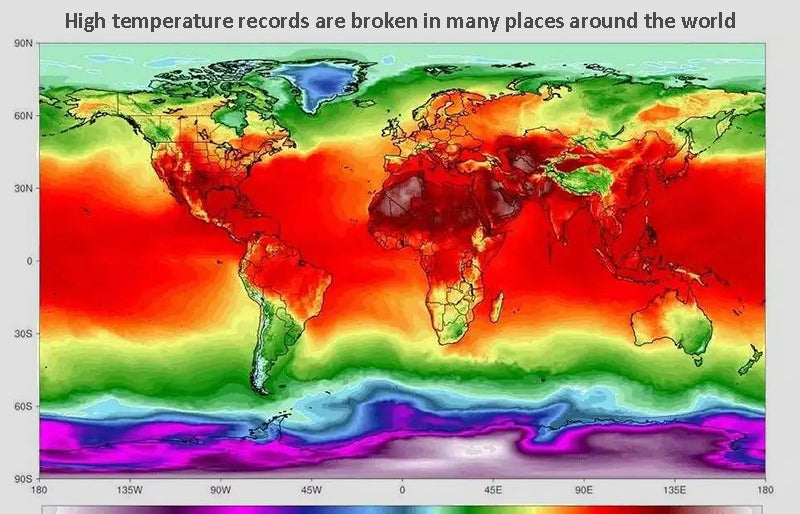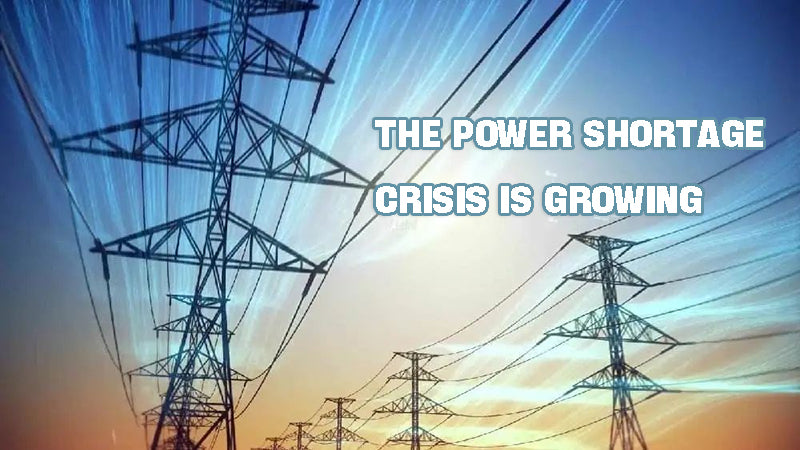
Main content:
1. High temperature records are broken in many places around the world
This summer, many places around the world set historical high temperature records again. China, the United States, South Korea, Japan, India, France, the United Kingdom, Germany, Spain, Portugal, Italy and other countries experienced extreme high temperatures above 40°C, and the highest temperature and the number of days of high temperature in many places broke historical records. Since March, India, the United States, Japan and other countries have experienced high temperatures. Temperatures in parts of India exceeded 44°C, much earlier than the hottest period in previous years.

In August, many places in China broke the record for the highest temperature on record. According to the recent monitoring and evaluation of the National Climate Center, since June 13 this year, the comprehensive intensity of regional high temperature events in China has reached the strongest since the complete meteorological observation records began in 1961. As of August 15, the high temperature event had lasted 64 days, the longest duration since 1961. Since the summer, the average number of high temperature days in China is 12.0 days, 5.1 days more than the same period of normal years, the most in the same period in history since complete meteorological observation records began in 1961.
2. The power shortage crisis is growing
Extreme high temperature weather has a direct negative impact on economic development and people's lives. On the one hand, it leads to frequent failures of infrastructure, disrupts the normal production and operation order, and hinders economic growth. On the other hand, it will lead to food production reduction, energy shortage and shortage, hunger, disease, and natural disasters, which will seriously affect people's living standards.
The hot weather has caused a surge in the demand for electricity for household air conditioners and industrial air conditioners, and many countries are facing the dilemma of overwhelmed power grids and short supply of electricity. In addition, the hot and dry weather has led to a significant drop in the power generation of renewable energy such as hydropower and wind energy, which has made the problem of insufficient energy supply even worse. In the summer of 2022, epic heat and dry weather in Europe caused river levels to plummet and hydroelectric production to drop with it.

On July 20, due to the impact of extremely high temperature weather, the power grid in east London, England, was briefly interrupted due to a surge in power demand. Several regions in the United States have set multiple heat records since June 10, and the U.S. power department predicts that as the United States suffers record heat and drought this summer, many regions may have to rotate power outages. Pakistan, Sri Lanka, Myanmar and other countries in Asia began to experience large-scale power outages due to short-term oil and natural gas and extreme high temperature weather.
3. Green power and energy storage become the global energy development trend
According to relevant statistics, the current global annual emissions of carbon dioxide has approached 40 billion tons, which is about 7 times that of 1950. Most of them come from the burning of fossil fuels, and the sharp increase in the concentration of carbon dioxide in the earth's atmosphere has disrupted the original heat balance of the earth system. It has caused climate change and accelerated the trend of global warming. In recent years, extreme weather conditions have frequently occurred, which has seriously affected the global economic development and people's quality of life. With the aggravation of environmental crisis and energy crisis, it will be an inevitable trend of global economic development to build a green energy system with clean electricity as the main body to replace traditional petrochemical energy.
Relevant data from the United Kingdom show that in 2021, about 10% of global electricity will come from solar and wind energy, and 38% of global electricity will come from carbon-free energy, including nuclear energy. The most important renewable energy source is still hydropower. It is estimated that by 2030, renewable energy will account for 50% of the total global power generation, and the incremental part will mainly come from wind power and solar power. In 2021, China's photovoltaic power generation will be 325.9 billion kWh, a year-on-year increase of 25.1%. China's wind power generation was 652.6 billion kWh, a year-on-year increase of 40.5%. The cumulative power generation of wind power and photovoltaics totaled 978.5 billion kWh, a year-on-year increase of 35.0%, accounting for 11.7% of the total electricity consumption of the society, exceeding 10% for the first time.
According to market analysis forecasts, by 2030, the actual installed capacity of wind power and photovoltaic industry in China may be as high as 1.8 billion kilowatts. However, a fatal weakness of green power such as wind power and photovoltaics is its strong intermittency and volatility. This shortcoming will have a fatal impact on the stability of the power grid, resulting in paralysis of the power grid and safety accidents of power interruption. In addition, most of the new energy power generation terminals are far away from economically developed areas, and need to be transported to the user side through long-distance transmission and distribution systems.

Due to the time mismatch between the power generation side and the user side, the generated power cannot be consumed in time, and serious abandonment of light and wind occurs, which restricts the effective on-grid electricity. In order to solve the above problems, energy storage is introduced into the power system. On the one hand, energy storage can solve the mismatch between power generation and electricity load during peak and valley periods by shaving peaks and filling valleys. On the other hand, it can participate in the provision of electric auxiliary services to solve the instability of the power grid caused by the volatility of wind and solar power generation.
In addition, the flexible configuration of the energy storage system can also increase the local consumption of green power and reduce the construction cost of the transmission system. From 2021 to 2025, the global energy storage market is expected to release 20.1GW, 32.7GW, 52.5GW, 75.3GW, and 114.2GW of energy storage construction demand, respectively, along with energy transformation and downstream power construction needs. Our website listed the top 10 energy storage lithium battery companies, which will help you understand the development of energy storage industry in China. The capacity demand under the comprehensive backup time is expected to be 38.8, 68.5GWh, 108.1GWh, 158.8GWh, and 235.7GWh, respectively, which is expected to drive the rapid growth of major energy storage technologies and related industrial chains.
Related article: energy storage USA, top 10 home energy storage battery companies, solar pv industry